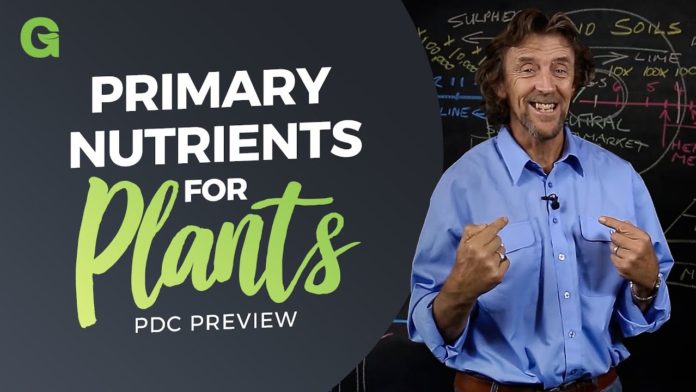This video is pulled from Geoff’s Online Permaculture Design Course. To learn more watch the free 4-Part Permaculture Masterclass Series: https://www.discoverpermaculture.com/permaculture-masterclass-video-1 or join Geoff’s Online Permaculture Design course:
https://www.discoverpermaculture.com/pdc2021.
Brief Overview
The three main primary nutrients for plants are the familiar NPK: Nitrogen, phosphate, and potassium. These can all be sourced naturally.
Nitrogen comes from trees and plants that have bacterial colonies on their roots that fix nitrogen into the soil. With annuals, we simply wait for the plants to die, and the roots release the nitrogen into the soil, but with perennials, we have the potential of adjusting this cycle. The basics of adjusting this cycle are that nodules on the roots provide nitrogen in exchange for starch produced from photosynthesis. Then, using techniques like pollarding and coppicing, which cause a self-pruning of the root system, the plants naturally provide nitrogen in the soil, as well as other useful functions like high-quality mulch from chop-and-drop pruning and forage/food.
Phosphate is said to be deficient worldwide, but it is also something that can be supplied easily and naturally. Bird manure is very rich in phosphate, so poultry and abundant wild birds can provide it. There are also certain trees—palms and casuarina–that fix phosphate into the soil, much like nitrogen-fixing plants do nitrogen. The difference here is that it’s a fungal relationship with the roots rather than a bacterial one. Nevertheless, the exchange is similar, and that means that the detritus from these trees is also rich in phosphate.
Potassium is much easier. It is present in all green material, so just by making sure that green organic matter has a place in the garden system, potassium levels should be sufficient.
Otherwise, seagrass and residue from fish, specially processed seawater and rock dust add lots of minerals to the soil. Livestock can also be fed mineral supplements as part of their health routine, and it will come through in their manure. For that matter, composting systems and vermiculture also provide an abundance of minerals for quality soil.
Key Takeaways
– The main primary nutrients for soil are nitrogen, phosphate, and potassium: NPK.
– Nitrogen comes from trees and plants that have bacterial colonies on their roots, exchanging nitrogen for starches from photosynthesis.
– Phosphate comes from either bird manure or plants that have a similar exchange as nitrogen-fixing trees, but this time with phosphate-fixing fungi.
– Potassium is present in all green organic material.
– Other sources of minerals include seagrasses, specially processed seawater, livestock manure, and compost/vermiculture systems.
To support us in making more videos:
► Sign up for our newsletter and the Permaculture Circle—Geoff’s curated collection of 100+ free videos: https://start.geofflawtononline.com/permaculturecircle/
► Like us on Facebook: https://www.facebook.com/geofflawtononline/
► Follow us on Instagram: https://www.instagram.com/geofflawtononline/
► Subscribe to our Youtube channel: https://www.youtube.com/channel/UCL_r1ELEvAuN0peKUxI0Umw/?sub_confirmation=1
► And most importantly, enjoy your permaculture journey!
#permaculture #permaculturedesign #permaculturecourse
Source




